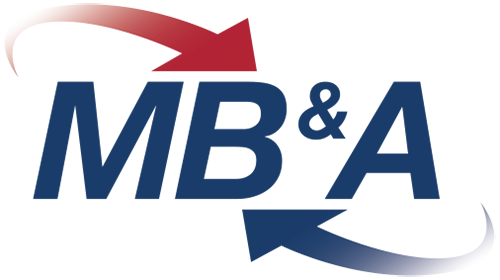At MB&A, our teams have worked primarily remotely since 2013. While the COVID-19 pandemic has presented us with unique challenges in terms of managing anxiety and overall health, the fundamentals for collaboration and productivity are largely the same.
These are the core areas we focus on to make remote work actually work:
- Performance – How do I ensure we’re making progress?
- Teamwork – How can we divide and conquer this task?
- Culture – What is the best way to maintain our core values and team alignment?
Performance
One of the strongest managerial concerns is how to oversee productivity and quality without walking the floors and looking over peoples’ shoulders. Back in 2013, as the Senior Partner at our Arlington, VA office, I had just finished reading Jason Fried’s book Remote: Office Not Required and decided to hire our first remote employee, because she was the best in the field. That being said, I wasn’t sure how we would manage her or anyone else once we green-lit working remotely for the entire team.
Fortunately, we made the transition at a time when technology, process tools, and remote culture blueprints were increasingly available. Early on, we began expanding our use of Agile principles beyond mere development and this armed us with a consistent framework for collaboration and reporting.
Far from an Agile zealot, I’ve always believed that “best practice” is what everyone says you should do and “good practice” is what works for you. We started with the principles and then adapted Agile to meet our needs over time. The key lessons we learned about working remotely are…
Cadence/Collaboration
It is critical to have daily meetings (of 15 minutes or less) at the team level because they:
- Ensure management can set priorities and measure progress;
- Enable staff to collaborate and engage in joint problem-solving to overcome barriers and bottlenecks; and
- Help people spend time together daily, albeit virtually, to build the social glue needed to support teams when real team work is required.
At our current scale with multiple teams working across multiple customers and projects, we also incorporate a “scrum of scrums” to roll up the meeting to accommodate collaboration across teams.
Work/Assignment Management
Delegation and task management are vital to ensuring progress and maintaining a high level of performance over time. There are a suite of project management tools for this, including Asana, Agile Accelerator, and our very own ExAM4Enterprise.com. Whatever you choose, the key is to have a repeatable process for describing individual assignments, estimating their level of difficulty and timeline, managing through a life cycle, and understanding these tasks and assignments as they roll up across the organization. We also do our timekeeping at this level.
During the past 7 years as I’ve watched our remote teams blossom, I’ve learned that by making tasks and progress as transparent as possible across teams, you can track performance and reinforce good behaviors. As an added measure, every two weeks we have a company-wide meeting, where I walk through key company metrics and announcements. For this, I use the company dashboard that includes things like assignments completed by person, deal charts, as well as a “shout out board,” where people can complement their colleagues who have helped them to move the ball forward.
Obviously, garbage in, garbage out still applies here, but – when done well – this level of documentation creates a virtuous cycle that can enhance your organization’s productivity. At a glance, it enables you to:
- Know what each employee is working on at any given time;
- Identify the type of work that is being done so that you can optimize business processes and leverage technology; and
- Observe key work streams to identify skills gaps, define roles, and make hiring decisions based on the actual work needs, not your perception of work.
Teamwork
“Teamwork” covers a lot of ground. For our purposes here, in order for teams to be effective, individual members must be available when you need them and ready to work together to achieve company objectives.
Availability
Getting things done often requires getting help from a mentor or a teammate. In a traditional office setting, that means simply walking down the hall because it’s hard to ignore someone standing in your doorway. Depending on the type of work you do, this can be far more challenging in a remote work environment. We became successful at this after we focused on a few key areas (described below).
Calendars and Core Hours
Based on my staff’s calendars, it’s easy for me to know when they are available for impromptu discussions or brainstorming. Most importantly, I need to know when members are not available. I say this because the biggest killer of collaboration is the perception of unavailability. One of the perks of working from home is, say, being able to pick up your groceries outside of peak hours. But it needs to be in the calendar. I don’t want to call a colleague when they are in line at the grocery store. Not only does it create a bad perception, it ruins collaboration.
Collaboration
With good reason, most executives dedicate a lot of time to thinking through the logistics of collaboration for remote teams. Since the beginning of the pandemic, I’ve seen lots of lists about video conferencing, productivity tools, and effective messaging. While I’m not going to dispute the importance of tools, they should follow a process. When you start to build out your collaborative environment, it’s key to focus on how you interact. Because communication drives execution, choosing the right tool for the job makes a big difference and must serve the process. One of the biggest drivers here is the response cadence required.
Time Sensitive
If I need something in near real time I use chat. I should be able to chat with them (we use Google Chat) and get a response back within 5-10 minutes. If I don’t, I’ll move to text. After that, I escalate the situation and protect my time by calling.
Whenever someone new joins our organization, I tell them that availability is key to making remote work actually work. If you have to pick a hill to die on as a manager, this is it.
Project Collaboration
I encourage chatter (we use Salesforce) over email for collaboration on tasks and assignments that aren’t time sensitive. Quite simply, messages that don’t require immediate action shouldn’t be sent through a channel that is oriented to real-time response. This helps your teammates do deep work by avoiding disturbing them with real-time updates against a task that doesn’t require it. It is critical to get this information out of email and into something like Salesforce or Slack to enable that work to be shared easily with people who need access to the information to do their job, not just with those who were carbon copied on an email.
External Collaboration
We use email almost exclusively to collaborate with external partners who aren’t in our Salesforce organization. Even though there are lots of tools in this space, and tools like Slack can be highly beneficial to organizations looking to manage external communications that bridge internal and external resources around products and channels. We don’t do it that way because the tools and approach we use already works for us.
Culture
Without doubt, a physical office makes it easier to build and maintain culture. By that same token, it also makes it more subject to a cult of personality. Proximity facilitates interaction, which builds relationships, and thereby transmits culture (for better or worse). While creating culture remotely can be more difficult, it can also be more strategically planned and orchestrated. At MB&A, we build culture through three primary mechanisms.
Onboarding
When a new staff member comes onboard they have a limited perception of the organization’s culture. It’s our first and best chance to get them sailing down the right path. When we were smaller, this meant a new team member would spend a couple of days with me and I would tell them about all the things I thought were important to create a strong corporate culture. Today, we have the MB&A Way video series where I teach our internal tools, talk about ethical business behaviors, and do my best to cram the “MB&A Way” approach to daily management into a series of training videos. I also leverage our own ExAM4Enterprise Certification and Training package.
Collaboration/Culture
After onboarding, we depend on our cadence and structured interactions to drive culture and continued development. As mentioned, every two weeks we meet as a company and everyone has an opportunity to hear directly from me. In turn, everyone also has an opportunity to talk about their role, contributions, and needs. This has facilitated a great deal of collaboration that simply wouldn’t have happened if everyone remained in their own little silo. Beyond this company-level interaction, every manager across the company is responsible for keeping to the organizational meeting cadence and imparting our core values around honesty, work, and community. Since all of our teams operate under a daily meeting structure, these messages can be continually reinforced.
One-on-ones
Let’s be honest, it’s hard to develop relationships over teleconferences. Before we went remote, I already knew the importance of one-on-ones and my appreciation has only grown stronger since. Strong relationships are the secret sauce that make organizational magic happen. After all, most people aren’t willing to go the extra mile just to accomplish a business objective; they do it for the sake of business objectives, personal goals, professional goals, and personal relationships. For that reason, I have regular one-on-one meetings with all of my direct reports.
Every manager should have a regular cadence for this, where you discuss not only status (which you should be overseeing in other places), but focus on the team member’s professional growth, ensuring work/life balance, and, importantly, asking specifically about how they are managing their teams and what they are doing to build their own relationships. This leader-to-leaders approach helps drive a cohesive management philosophy, builds relationships that support organizational objectives, and provides a forum for opinions that sometimes don’t get voiced in group environments.





